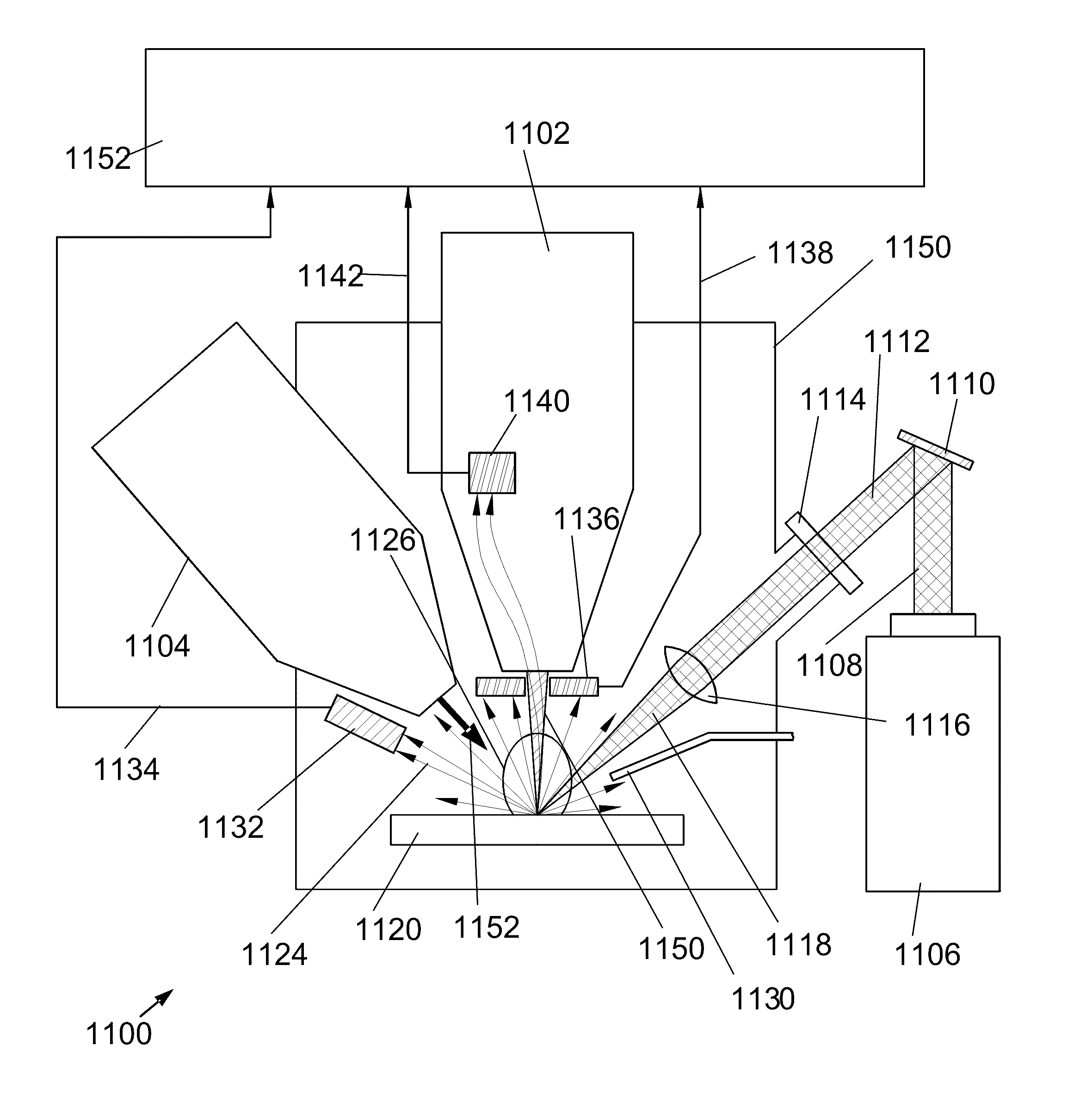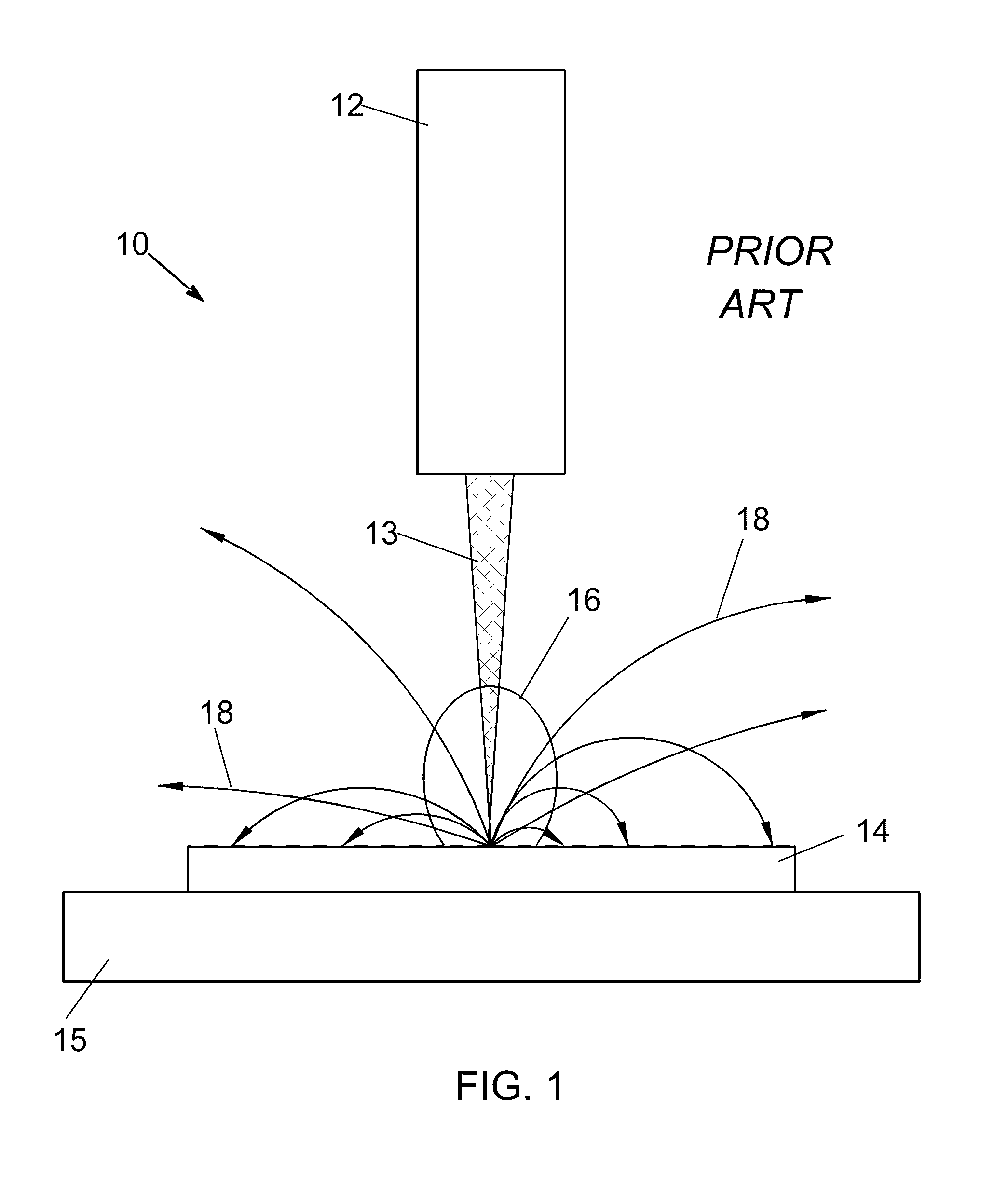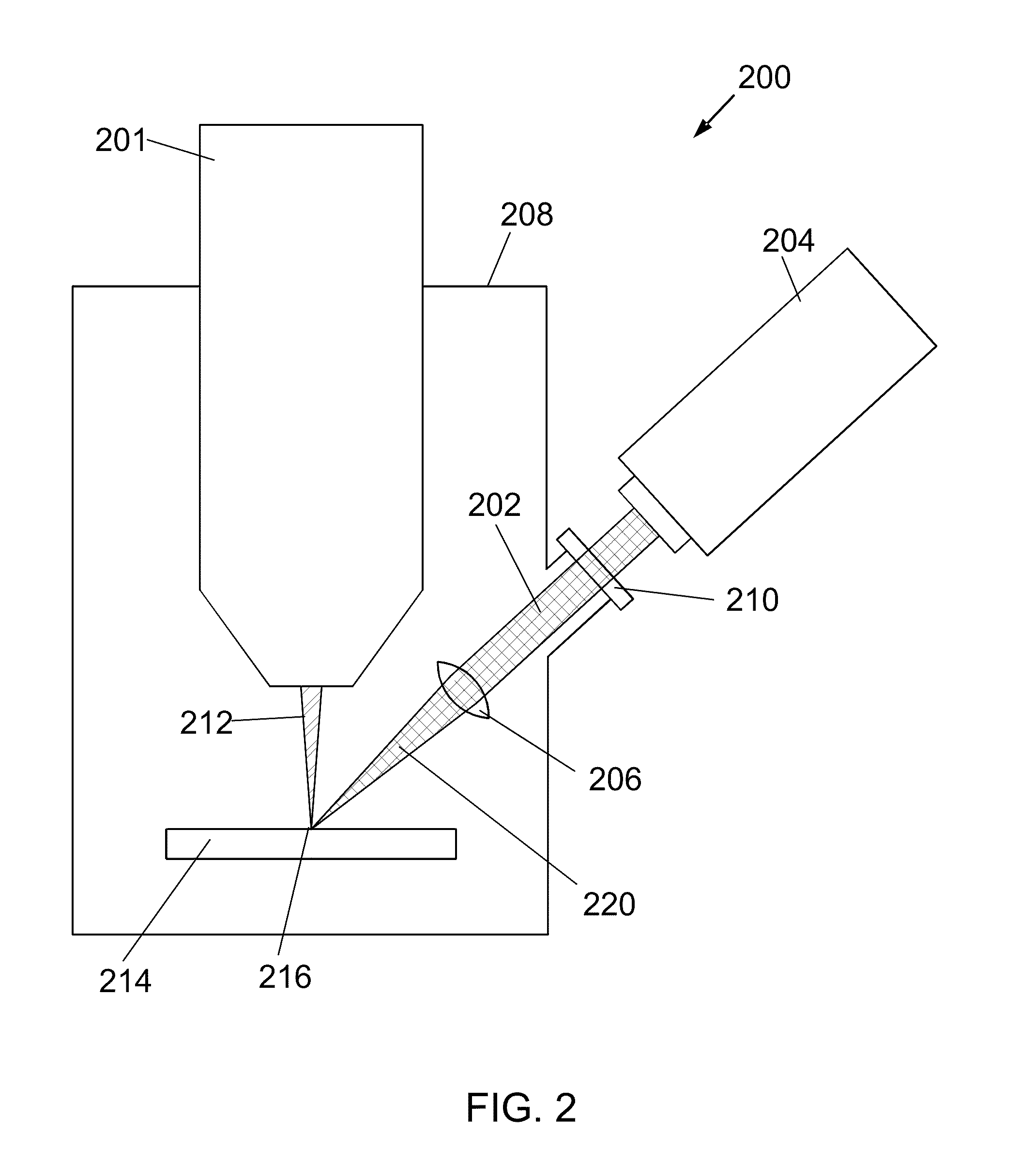Combination laser and charged particle beam system
a laser beam and charged particle technology, applied in the field of laser beam system combination, can solve the problems of high-precision milling or sample removal often requiring tradeoffs, ion beams tend to damage sample surfaces, and limited processing rate of liquid metal ion sources
- Summary
- Abstract
- Description
- Claims
- Application Information
AI Technical Summary
Benefits of technology
Problems solved by technology
Method used
Image
Examples
embodiment 300
[0053]FIGS. 3A and 3B show a preferred embodiment 300 of the invention comprising a combination dual beam FIB / SEM with a confocal laser. As in FIG. 2, the laser beam 302 from a laser (not shown) is focused by lens 306 located inside the vacuum chamber 308. In the embodiment of FIG. 3, the positioning and focusing of laser beam 302 can be controlled via lens positioning assembly 320 (“LPA”), which can be used to adjust the position (in X, Y, and Z) of the lens 306. A beam generated by a laser can be directed through the LPA window 322 so that it passes through LPA tube 324 and lens 306. Charged particle beams produced by electron beam column 316 and focused ion beam column 317 can be coincident with the laser beam 302 on sample 314.
[0054]LPA 320 is shown 400 in greater detail in FIGS. 4A-4B. The adjustment head 430 of the LPA can be mounted to the outer wall of the vacuum chamber (as shown by dashed line 432). XYZ-positioner 434 can be used to adjust the position of the lens and lens...
embodiment 800
[0058]In another preferred embodiment 800, as shown in FIG. 8, a flat mirror 807 could be located between the source of the charged particle beam 812 (column 801) and the sample 814. Again, mirror 807 would preferably have a hole 805 to allow charged particle beam 812 to pass through the mirror 807 and arrive at the sample 814. In this case, the laser beam 802 (generated by laser 804 and entering chamber 808 through window 810) could be focused by a lens 806 (or by a group of lenses) before reaching the mirror 807. Relative to lens 806 (or group of lenses), mirror 807 would preferably be located between the lens 806 and its focal point at the surface of the sample 814. Thus, the laser beam 802 and the charged particle beam 812 would again be both coaxial and confocal.
embodiment 900
[0059]In the preferred embodiment 900 of FIG. 9, a lens 906 with a hole 915 in it could be located below the flat mirror 907 (also having a hole 905), the lens 906 thus focusing the laser beam 902 (generated by laser 904 and entering chamber 908 through window 910) onto the sample 914 while still allowing the passage of charged particle beam 912 (produced by column 901). This configuration could also make the laser beam 902 and the charged particle beam 912 both coaxial and confocal.
PUM
 Login to View More
Login to View More Abstract
Description
Claims
Application Information
 Login to View More
Login to View More - R&D
- Intellectual Property
- Life Sciences
- Materials
- Tech Scout
- Unparalleled Data Quality
- Higher Quality Content
- 60% Fewer Hallucinations
Browse by: Latest US Patents, China's latest patents, Technical Efficacy Thesaurus, Application Domain, Technology Topic, Popular Technical Reports.
© 2025 PatSnap. All rights reserved.Legal|Privacy policy|Modern Slavery Act Transparency Statement|Sitemap|About US| Contact US: help@patsnap.com



